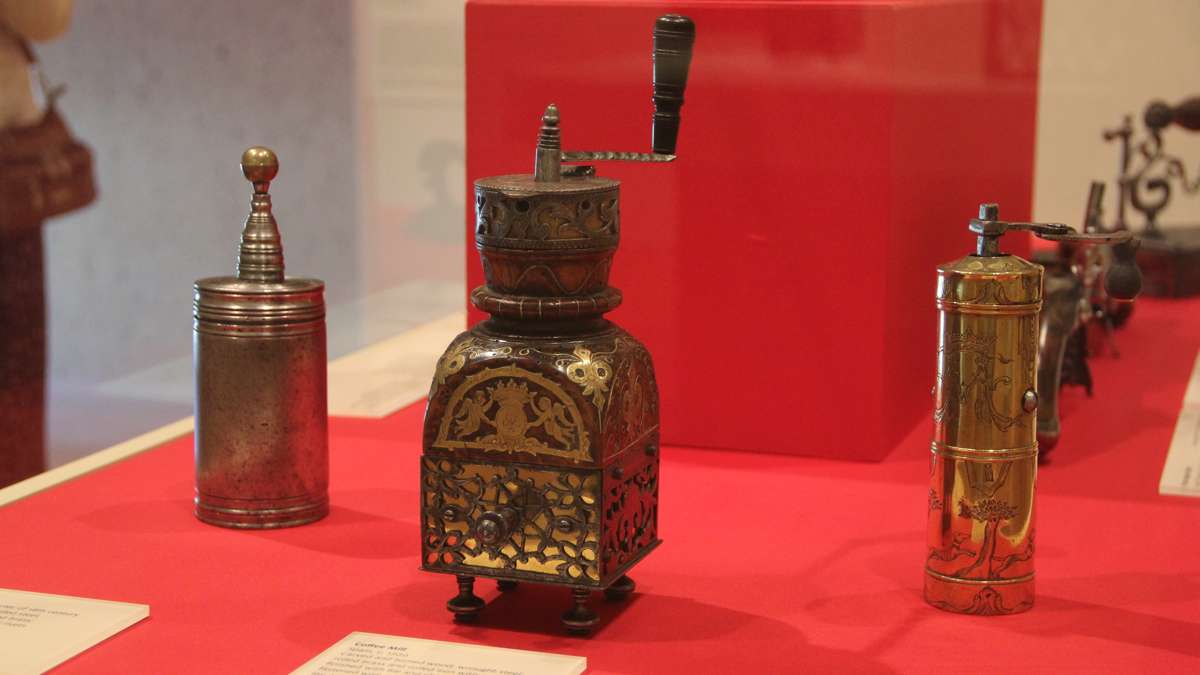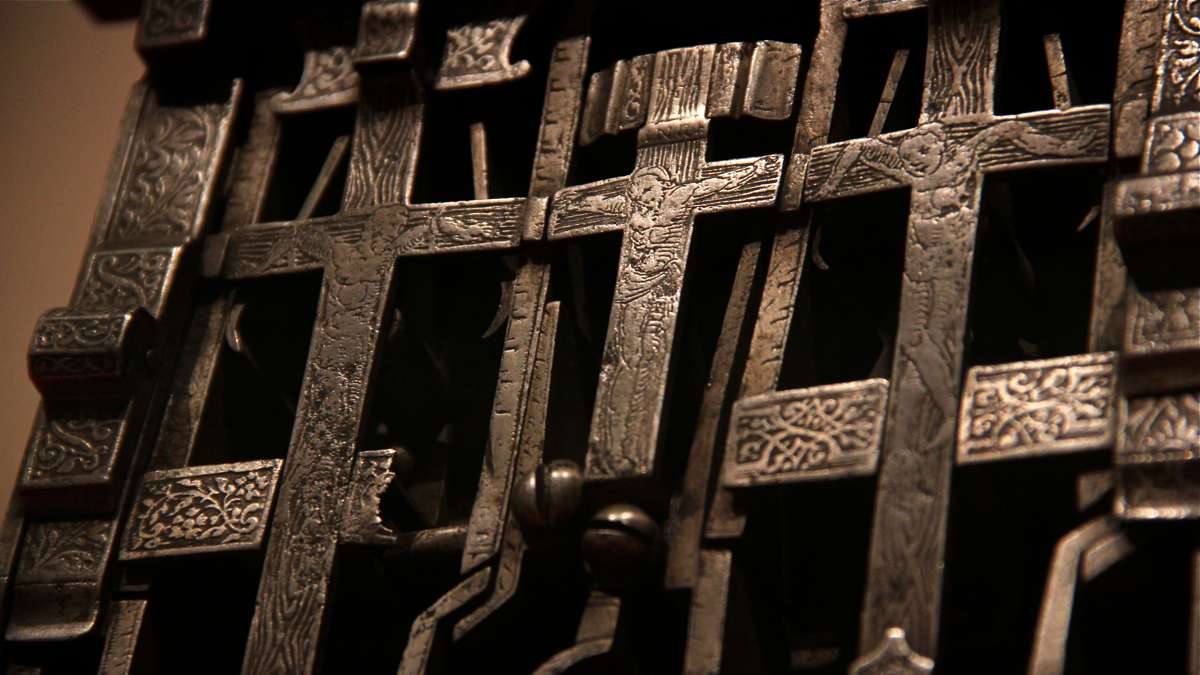What hath Barnes wrought: Metal oddities join French treasures in spotlight
Most people are lured to the Barnes Foundation, on the Parkway in Philadelphia, for the art collection featuring 181 Renoirs, 69 Cezannes, 46 Picassos, and many more; but a third of the famous collection comprises odd pieces of metal arranged between the paintings.
Albert Barnes collected 887 wrought-iron hinges, door knockers, lock plates, weather vanes, and sundry handmade pieces. They are all on display, hidden in plain sight among the masterworks. He liked to arrange them in a way that obscures their original function.
“Sometimes he did it to underscore forms in the paintings, sometimes to make a joke,” said curator Judith Dolkart. “We’re celebrating the objects in and of themselves. Their artistic creativity, innovation — and often they’re funny. There is whimsy in these objects.”
Dolkart has curated a show of metal objects collected by an obscure museum in France, which Barnes called a “temple of wrought iron.” She began to coordinate “Strength and Splendor: Wrought Iron from the Musée Le Secq des Tournelles” in 2011, when she was still staff curator at the Barnes Foundation. She has since moved on to direct the Addison Gallery of American Art in Andover, Massachusetts. Dolkart returned to the Barnes to see this show through.
“Strength and Splendor” features 150 objects culled from the 1,500-piece collection in Rouen, which toes the line between form and function. There is a delicate iron serpent used to light the fuse of a cannon; ornate coffee mills; a lantern in the shape of a bat used over the door of a cabaret; and a complex lock whose interior mechanism resembles the crucifixion of Jesus flanked by the two thieves on crosses — the figures are inside the lock where they would not normally be seen.
 The interior mechanism of this chest lock made in southern Germany in the 16th century was adorned by its maker with an etching of the Crucifixion of Jesus flanked by thieves, described in the Gospel of Luke. (Emma Lee/WHYY)
The interior mechanism of this chest lock made in southern Germany in the 16th century was adorned by its maker with an etching of the Crucifixion of Jesus flanked by thieves, described in the Gospel of Luke. (Emma Lee/WHYY)
There are also some dirty little jokes. One key escutcheon — a lock plate — is in the shape of a male figure with a strategically placed keyhole. Once a key is inserted, it completes his anatomy.
To accompany the show, the Barnes Foundation commissioned Brooklyn artist Ellen Harvey to recreate each piece of metalwork in the Barnes collection as its own, life-size painting. Each of the 887 objects is painted on a rectangular, magnetized panel, which were then densely clustered on a steel wall, 15 feet by 25 feet.
She spent a year painting the objects as brown silhouettes, eradicating their purpose while highlighting their shape — accomplishing in paint what Barnes did in his gallery arrangements.
The wall cluster is shown in the same gallery as the pieces from Musée Le Secq des Tournelles, whose objects are much more ornate, lively, and functionally intriguing. Whereas the Musée has a spring-activated lock designed the break the wrist of the thief who attempts to tamper with it, Barnes tended toward hinges with curious curlicues.
“He’s going for simple, clean, functional pieces, and then he makes them nonfunctional, and therefore more artistic,” said Harvey. “Of course, things are more artistic if they are useless. And I’ve made them more useless because they are just paintings. Now they are extra-artistic.”
WHYY is your source for fact-based, in-depth journalism and information. As a nonprofit organization, we rely on financial support from readers like you. Please give today.

















